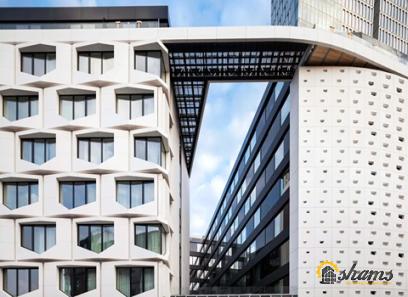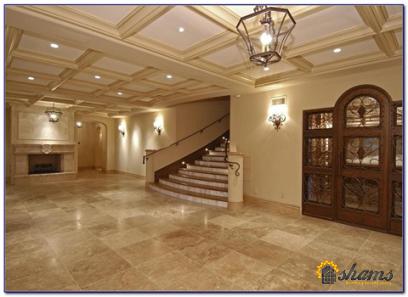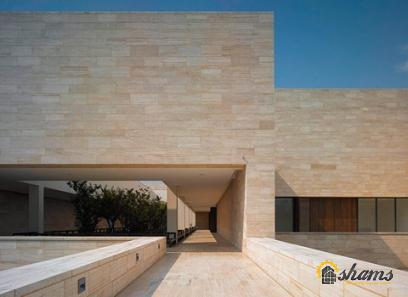The design possibilities within the realm of architecture have expanded tremendously in recent years, thanks to advancements in technology and the advent of innovative techniques. One such development garnering considerable attention is the use of curved facades in building design. This distinct architectural element not only adds aesthetic appeal but also offers numerous practical advantages, revolutionizing the way we look at buildings. 1. Distinctiveness and Aesthetic Appeal: Curved facades have the power to transform the traditional geometric shapes of buildings, injecting a sense of uniqueness and dynamism into their design. Far from being just an aesthetic feature, the curved facade allows architects to infuse creativity, making a bold statement that sets a building apart from its surroundings.

.
 2. Enhanced Energy Efficiency: Curved facades provide numerous benefits in terms of energy efficiency. The curvature of the facade allows for better distribution of natural light, reducing the dependency on artificial lighting during daytime hours. Additionally, the curvature reduces the wind resistance faced by the building, resulting in lower energy consumption for HVAC systems. 3. Improved Structural Integrity: The curved shape of a facade offers enhanced structural integrity and durability, especially when compared to traditional flat facades. This design element allows for the distribution of loads and forces more evenly across the structure, minimizing areas prone to stress concentrations. As a result, curved facades can withstand various environmental factors such as wind, rain, and seismic activities more efficiently.
2. Enhanced Energy Efficiency: Curved facades provide numerous benefits in terms of energy efficiency. The curvature of the facade allows for better distribution of natural light, reducing the dependency on artificial lighting during daytime hours. Additionally, the curvature reduces the wind resistance faced by the building, resulting in lower energy consumption for HVAC systems. 3. Improved Structural Integrity: The curved shape of a facade offers enhanced structural integrity and durability, especially when compared to traditional flat facades. This design element allows for the distribution of loads and forces more evenly across the structure, minimizing areas prone to stress concentrations. As a result, curved facades can withstand various environmental factors such as wind, rain, and seismic activities more efficiently.
..
 4. Acoustic Benefits: Curved facades introduce innovative acoustic properties within a building. By using curved glass panels, architects can control and manipulate sound reflections, diffusions, and absorptions. This allows for the creation of quieter and more comfortable indoor environments, particularly in high-traffic areas or urban environments. 5. Flexibility in Design: The use of curved facades enables architects to experiment with diverse design schemes and concepts that defy the limitations of conventional building envelopes. From graceful curves to intricate patterns, the possibilities are virtually limitless. The flexibility to adapt the curvature to fit specific project requirements encourages architectural creativity and allows for the creation of iconic landmarks.
4. Acoustic Benefits: Curved facades introduce innovative acoustic properties within a building. By using curved glass panels, architects can control and manipulate sound reflections, diffusions, and absorptions. This allows for the creation of quieter and more comfortable indoor environments, particularly in high-traffic areas or urban environments. 5. Flexibility in Design: The use of curved facades enables architects to experiment with diverse design schemes and concepts that defy the limitations of conventional building envelopes. From graceful curves to intricate patterns, the possibilities are virtually limitless. The flexibility to adapt the curvature to fit specific project requirements encourages architectural creativity and allows for the creation of iconic landmarks.
…
 6. Branding and Marketing: In today’s competitive real estate market, buildings often serve as symbols of prestige and identity for organizations. Curved facades provide a visually striking canvas for branding and marketing purposes, providing an opportunity for businesses to leave a memorable impression on potential clients, visitors, and stakeholders. Conclusion: The surge in popularity of curved facades signifies a shift in the traditional approach to building design. With their combination of eye-catching appeal, energy efficiency, structural strength, acoustic benefits, and design flexibility, curved facades bring a slew of advantages to the contemporary architectural landscape. As this trend continues to gain momentum, it is bound to redefine the future of building aesthetics and functionality. Architects and developers keen on making a lasting impact should consider embracing this innovative architectural element to unlock its full potential.
6. Branding and Marketing: In today’s competitive real estate market, buildings often serve as symbols of prestige and identity for organizations. Curved facades provide a visually striking canvas for branding and marketing purposes, providing an opportunity for businesses to leave a memorable impression on potential clients, visitors, and stakeholders. Conclusion: The surge in popularity of curved facades signifies a shift in the traditional approach to building design. With their combination of eye-catching appeal, energy efficiency, structural strength, acoustic benefits, and design flexibility, curved facades bring a slew of advantages to the contemporary architectural landscape. As this trend continues to gain momentum, it is bound to redefine the future of building aesthetics and functionality. Architects and developers keen on making a lasting impact should consider embracing this innovative architectural element to unlock its full potential.











Your comment submitted.